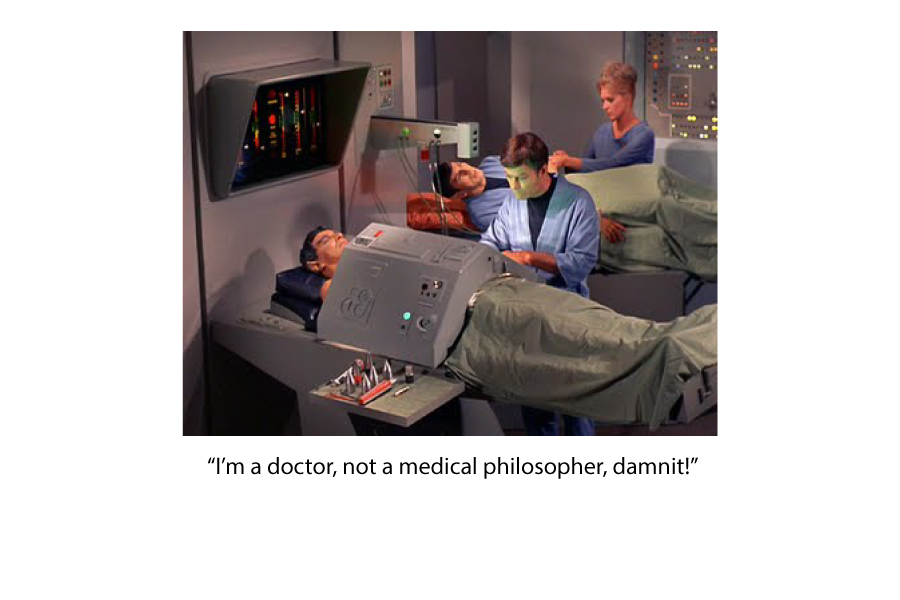
- Written:
- Author: Edward
- Posted in: dr ed park, research, Telomere erosion
- Tags: bad science, bill andrews, diouha, Dr. Ed Park, post-mitotic, telomere length, telomere variation, tricorders
Last week, I was happy to reunite with some friends like Bill Andrews, an internationally known telomere researcher. I filmed several interviews at the AMMG Conference in Las Vegas which I will be posting soon.
When I asked him about the lack of telomere length correlation between organ types and my belief that all cells age at different rates because of genetic chimerism (we become less intact genetic versions of ourselves with evolution away from the one original code) he asked: “what’s the solution?”
Apparently we were both thinking of “tricorders” from Star Trek. Love that guy.
Anyway, I have often said that the 20,000 studies showing telomere shortening in nearly all diseases is misrepresenting of even missing the point by not studying the organs associated with diseases that we are interested in. We are measuring leukocytes or white blood cells because they are easy but they also vary the most. We cannot extrapolate that LTL is a direct proxy for aging in all organs so researchers should study organs of interest (which is sadly, rare).
In truth, a tricorder would tell the inconvenient truth of what several studies have suggested: that different organs age at different rates. When you examine telomere lengths from cadavers, only the muscle between ribs and liver cells had decent, but not high correlation with leukocyte TL.
They found by looking at 12 organ types in humans from 29-wks old to 88-years old that the telomere length variation was least in the brain, which makes sense because is comprised mostly of non-dividing (or post-mitotic) cells. Like a brakes age faster in a car in San Francisco, the undercarriage ages faster in Boston, where they salt the roads. A drinker has more turnover in the liver and esophagus and a smoker has more turnover in the lungs.
Diouha D et al. Comparison of the relative telomere length measured in leukocytes and eleven different human tissues. Physiol Res. 2014;63 Suppl 3:S343-50.
| Therefore, we have measured relative telomere length (rTL) in twelve different human tissues (peripheral blood leukocytes, liver, kidney, heart, spleen, brain, skin, triceps, tongue mucosa, intercostal skeletal muscle, subcutaneous fat, and abdominal fat) from twelve cadavers (age range of 29 week of gestation to 88 years old). The highest rTL variability was observed in peripheral leukocytes, and the lowest variability was found in brain. We found a significant linear correlation between leukocyte rTL and both intercostal muscle (R=0.68, P<0.02) and liver rTL (R=0.60, P<0.05) only. |
| P.S.
If you don’t believe me, look at the one of the earlier studies by Kveiborg et al in 1999. They found that people with osteoporosis had shorter telomeres in the bone stem cells but concluded that aging was not related because the LTL was the same. Talk about “group think” sabotaging science! They had already accepted the false assumption that LTL was a direct and perfectly a proxy for aging in all organs so they couldn’t see that osteoporosis was merely specific aging of stem cells in the bone. There is only one disease with many faces. |


2 thoughts on “The big fat lie at the heart of 95% of telomere research”
Pingback: Archives Week 12 – August 7th, 2022 – Recharge Biomedical
Pingback: Archives Week 12 – August 7th, 2022 – Lokahi Guru